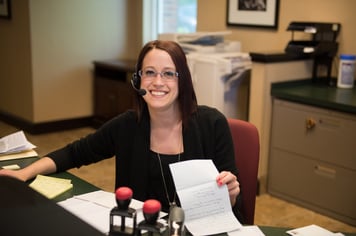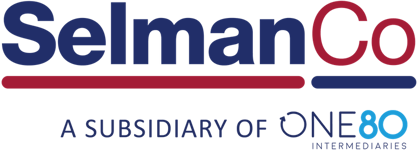
You've probably dialed a customer service number that sent you into a maze of options, where your only hope was to reach a live operator. If you're calling to discuss the intimate details of a health or life insurance claim, you'll want the person you reach to be knowledgeable and friendly. Customer service at Selman & Company is one of the most important aspects of our business; About 80% of all our customer contact flows through our call center, and a phone call is one of the few interactions customers might have in a year regarding their policy. That's why this is a key area to improve customer retention and capitalize on upsell opportunities. Here are five ways we advance our customer’s experience within our insurance claims call center.
1. Confidence Booster: Know the Tools
Every Customer Service Representative must have a strong sense of personal confidence. It's the kind of job that requires people who are wired that way. Why? Representatives should be confident they can answer any question or solve any problem the customer may have. It requires a combination of creativity and expertise with systems and tools.
In order for our Customer Service Representatives (CSR’s) to have that confidence, we give them the training and tools they need to answer questions and solve problems with ease. It begins with a solid training foundation that includes a comprehensive written curriculum, graded classroom instruction, detailed policies that are continuously updated, and a practice component using simulated calls.
Another way to keep up confidence is through quarterly system training. This presents regular intervals for CSRs to learn about software updates, new best practices, and train on the new products they'll be supporting. After a CSR has mastered the basics, ongoing training is essential to stay on top of the game.
2. Soft Skills Matter
Let’s face it, people dread contacting call centers and speaking with CSRs because, too often, the representative's responses are uncaring or robotic. We encourage our CSRs to engage in productive and successful conversation by developing their soft skills: communication, adaptability, problem solving, conflict resolution, and critical observation. These soft skills create a positive experience for any customer. In an insurance claims call center, CSRs handle a wide variety of calls from people who may be frustrated, grieving, or confused. Soft skills training helps reps hone their instincts to balance compassion with accuracy. Recorded calls and simulations are a great way for CSRs to learn the appropriate response to any situation.
3. Create a Positive Environment
Angry customers expect--and deserve--their inquiry to be addressed right away. However, the person to whom they are venting is only human, too. That's why it's important to create a positive environment for each CSR to help keep spirits high. After a tough call, it's important that he or she feels the support of the entire department. Some of the ways we do this include lunch contests, sweet,healthy treats available for all of our CSRs, performance-based competitions, and mentorship.
We also recognize our outstanding CSRs by selecting a "Super Hero of the Month." The Super Hero of the Month gets free lunches every Wednesday for that month as well as a decorated, life-sized cut-out that is placed in the call center. It's fun, and it highlights the individual contributions of each rep.
4. Coaching Based on Case Study
We find that two types of coaching improve CSR performance: peer-to-peer coaching and supervisor coaching. Both methods are triggered by actual calls.
Peer-to-peer coaching is a semi-formal arrangement that allows CSRs to ask their peers certain types of questions instead of going to their supervisors. Think of peer-to-peer coaching like a Big Brother/Big Sister mentorship program. This type of coaching also lets CSRs grow closer and become comfortable working with each other. Some employees feel more comfortable asking a peer a question rather than a supervisor. Peer-to-peer coaching results in measurable impact through quick performance tweaks.
Supervisor coaching is a very powerful type of coaching that can change the way a customer service department operates. While most companies will record calls at random, Selman & Company records all incoming and outgoing calls within the call center. This allows supervisors to listen to calls "live" or play recorded calls and provide immediate feedback. After listening to the recorded calls the supervisor and the CSR can detail specific ways to be more effective. Working with individuals also allows supervisors to spot trends across the CSR department as a whole, and then work on those weaknesses as a group.
5. Quality Audit Using Hard KPIs
We strive to be above the industry standard in the areas of call wait time, abandoned rate, and new business processing. Our CSRs answer 90% of our calls within 30 seconds, on average, while the industry standard is closer to 80-85%. Each rep answers between 50-70 calls per day. Each week, five random calls per representative are selected for review. Most of our contracts require a quality score of 95-96%, but we regularly exceed this by achieving 98%.
Some of the other metrics we track include:
- call center total calls
- average cost per call
- call center service level
- enrollment activity/claim activity
- critical systems availability
- pending and aging of work in progress
So, why the fixation on quality? Through daily reports we are able to quickly find areas that can be improved, while monthly reports allow us to see overall trends and track data on a higher level. Great numbers on key metrics contribute to better customer retention and improved revenue for our clients.
Selman & Company works hard to create a positive experience for customers. If you are a motivated individual with good phone skills who has experience in a call center, please check out our employment page or contact us today!



